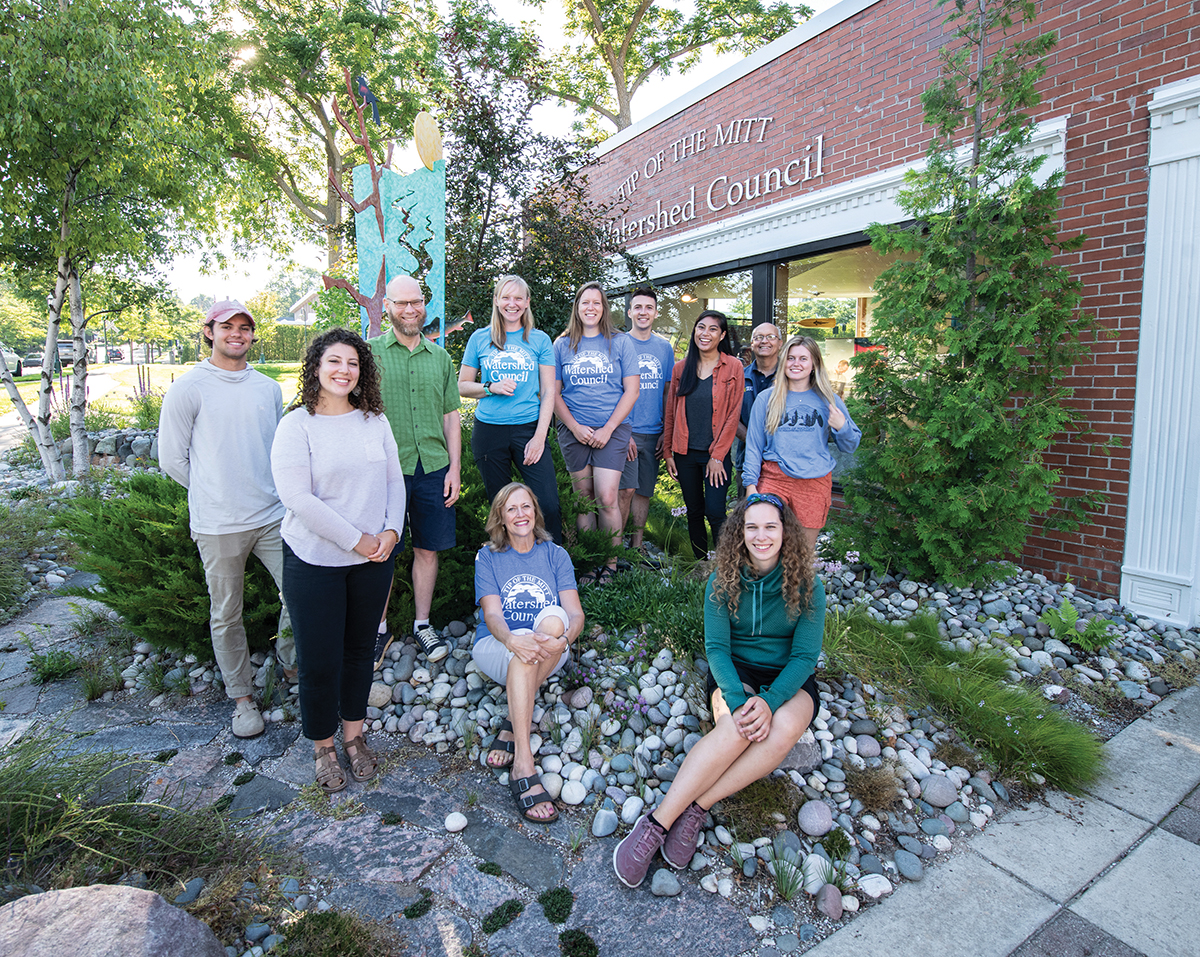
SEAS master's students and Professor of Practice Paul Seelbach on the coast of Lake Michigan.

The Obtawaing Biosphere Region is an area spanning Michigan’s northern Lower Peninsula and eastern Upper Peninsula. It stretches from the Sleeping Bear Dunes National Lakeshore and across the Straits of Mackinac to Sugar Island near Sault Ste. Marie.
What makes the Obtawaing Biosphere Region unique, according to Jon Allan, academic and research program officer at SEAS, is that it is made up of hundreds of protected places, from conservation lands and conservancies to state and federal forests.
And what ties these places together, says Allan, is water and hydrology.
“You can’t have healthy systems without healthy waterways,” says Allan, who is overseeing the second year of a SEAS master’s project focused on unifying the work of partner organizations to ensure the sustainability of the Obtawaing Biosphere Region. “So, the question is, how can groundwater and surface water continue to tie this region together as a unifier? Our partner organizations are interested in that question as well—and the kind of collaborative space that it provides.”
SEAS master’s students Erin Graves, Ysabelle Yrad, Mikela Dean and Marisa Smedsrud are the second cohort to work on the Obtawaing master’s project. With guidance from Allan and their other co-adviser, Paul Seelbach, Professor of Practice, the students spent last summer engaging with partner organizations, including Tip of the Mitt Watershed Council in Petoskey as well as tribes, to understand the role of water and hydrology in their respective places and in their long-term conservation plans.

“Freshwater is really the root that connects everybody in this area,” says Smedsrud, who is specializing in Geospatial Data Sciences. “We hope that some of our deliverables will help to build that common understanding between our partners and give a communal sense of direction on how to move forward to protect it.”
The master’s students are building upon the work of SEAS graduates Daniela Fernández Méndez Jiménez (MS ’22) and Samuel La Russo Frederickson (MS ’22), who helped the partner organizations develop a shared vision, mission, and set of goals and objectives for what a sustainable future looks like for the Obtawaing region.
The bulk of the new students’ work so far has involved interviewing clients “to help determine how we can shape a sustainable future around water,” says Dean, who is studying Ecosystem Science and Management.
The interviews were accompanied by field site visits, adds Graves, “because we can’t accurately tell the story of a region without having experienced it.”
Through this “intentional exploring,” says Graves, who also is specializing in Ecosystem Science and Management, the students learned more about each area’s cultural significance and regional identity, as well as about their respective landscapes, including the plants and animals that inhabit each area.
“What was most impactful for me,” says Dean, “was getting to go out into the field with the clients and absorbing their knowledge because they were so willing to share everything they know about the landscape.”
For Yrad, who is specializing in Sustainability and Development, another highlight of the work has been the relationship-building with clients. “We aren’t just doing fieldwork or analysis,” she says. “We are actually learning what a coalition is like and how to collaborate with people in their day-to-day lives.”
This goes back to one of the main goals of the master’s project, says Allan: “It’s about helping clients organize themselves, build trust in each other and find paths forward together to create a thriving and sustainable future.”

SEAS master's students and Professor of Practice Paul Seelbach on the coast of Lake Michigan.